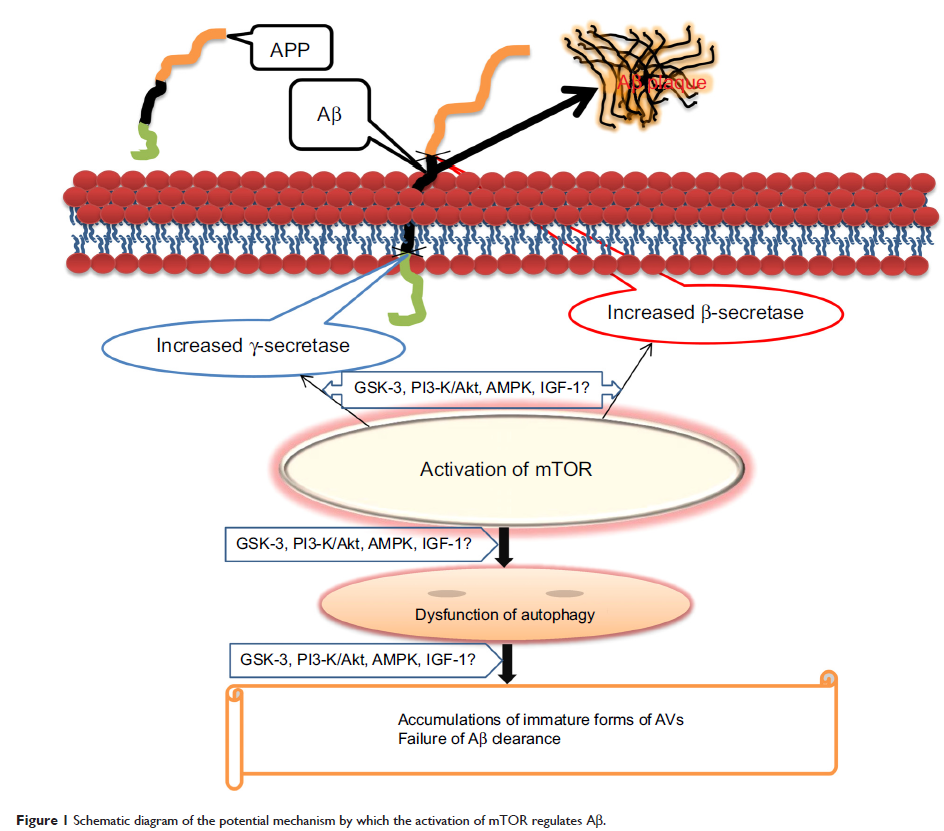9 5 9 4 4
论文已发表
注册即可获取德孚的最新动态
IF 收录期刊
- 3.3 Breast Cancer (Dove Med Press)
- 3.4 Clin Epidemiol
- 2.5 Cancer Manag Res
- 2.9 Infect Drug Resist
- 3.5 Clin Interv Aging
- 4.7 Drug Des Dev Ther
- 2.7 Int J Chronic Obstr
- 6.6 Int J Nanomed
- 2.5 Int J Women's Health
- 2.5 Neuropsych Dis Treat
- 2.7 OncoTargets Ther
- 2.0 Patient Prefer Adher
- 2.3 Ther Clin Risk Manag
- 2.5 J Pain Res
- 2.8 Diabet Metab Synd Ob
- 2.8 Psychol Res Behav Ma
- 3.0 Nat Sci Sleep
- 1.8 Pharmgenomics Pers Med
- 2.7 Risk Manag Healthc Policy
- 4.2 J Inflamm Res
- 2.1 Int J Gen Med
- 4.2 J Hepatocell Carcinoma
- 3.7 J Asthma Allergy
- 1.9 Clin Cosmet Investig Dermatol
- 2.7 J Multidiscip Healthc

已发表论文
mTOR 的活化: 阿尔茨海默氏症 (Alzheimer's disease) 的罪魁祸首?
Authors Cai Z, Chen G, He W, Xiao M, Yan LJ
Published Date April 2015 Volume 2015:11 Pages 1015—1030
DOI http://dx.doi.org/10.2147/NDT.S75717
Received 12 October 2014, Accepted 11 December 2014, Published 9 April 2015
Abstract: Alzheimer’s disease (AD) is characterized by cognitive impairment in
clinical presentation, and by β-amyloid (Aβ) production and the
hyper-phosphorylation of tau in basic research. More highlights demonstrate
that the activation of the mammalian target of rapamycin (mTOR) enhances Aβ
generation and deposition by modulating amyloid precursor protein (APP)
metabolism and upregulating β- and γ-secretases. mTOR, an inhibitor of
autophagy, decreases Aβ clearance by scissoring autophagy function. mTOR
regulates Aβ generation or Aβ clearance by regulating several key signaling
pathways, including phosphoinositide 3-kinase (PI3-K)/protein kinase B (Akt),
glycogen synthase kinase 3 [GSK-3], AMP-activated protein kinase (AMPK), and
insulin/insulin-like growth factor 1 (IGF-1). The activation of mTOR is also a
contributor to aberrant hyperphosphorylated tau. Rapamycin, the inhibitor of mTOR,
may mitigate cognitive impairment and inhibit the pathologies associated with
amyloid plaques and neurofibrillary tangles by promoting autophagy.
Furthermore, the upstream and downstream components of mTOR signaling are
involved in the pathogenesis and progression of AD. Hence, inhibiting the
activation of mTOR may be an important therapeutic target for AD.
Keywords: Alzheimer’s disease, mammalian target of rapamycin, rapamycin, β-amyloid, neurofibrillary tangles, signalling
Keywords: Alzheimer’s disease, mammalian target of rapamycin, rapamycin, β-amyloid, neurofibrillary tangles, signalling
